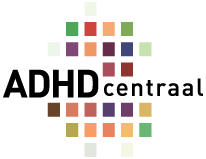What is ADHD?
ADHD stands for Attention Deficit Hyperactivity Disorder and is a, possibly, congenital and hereditary disorder in which fewer neurotransmitters are produced. These are the substances that transmit messages to the brain. This can make it difficult to concentrate and you become easily distracted (attention problems). You may also make thoughtless decisions and act too quickly (impulsivity). In addition, you may be physically overactive or feel restless all the time (hyperactivity). ADHD without hyperactivity used to be called ADD.
There are 3 types of ADHD, namely the predominantly inattentive type, the combined type and the predominantly hyperactive/impulsive type.
Symptoms can vary from one individual to another.
Attention Problems
- Being easily distracted
- Difficulty finishing things
- Switching from one activity to another
- Not having an overview of main and secondary issues
- Poor ability to plan, organize and choose
- Only able to read briefly (or just very long in hyperfocus)
- Only be able to muster concentration when the subject is very interesting
- Difficulty listening, and getting information through
- Difficulty filling out forms, understanding and remembering instructions
- Being forgetful
- Often losing things
- Being chaotic
Hyperactivity
- Difficulty sitting still
- Always having to be busy
- A feeling of inner restlessness
- Unstoppable stream of thoughts
- Fries
- Poor ability to relax
- Fast talking
- Fanatic sports
- Jumping from heel to heel in conversation
- Thoughts moving faster than you can keep up with talking
Impulsivity
- Outbursts of anger
- Impulse buying
- Blurting things out: saying what you think
- Speaking to others
- Being impatient
- Addictive
- Binge Eating
- Impulsively entering or breaking relationships and jobs
- Quickly falling in love
- Quickly saying yes, only then thinking about the consequences
Function
If you recognize yourself in many of the situations mentioned above, it will certainly affect your performance. Your life may not be running as successfully as you expected or hoped. ADHD is not always recognized as a cause. You probably recognize that others think you are not motivated, have no interest, are stressed or have mental health problems. How many times have you been told that:
- You just have to try harder
- You can concentrate if you find it interesting
- You can do it if you really have to
- You need to learn to control better
- If you didn’t drink so much you would function better
- You’re just a little busy
- With a week off, you would get things sorted out.
ADHD can affect multiple areas of life, such as school, work, relationships, substance use (alcohol, drugs, etc.) and the household.
In everyone, ADHD can manifest itself differently.
